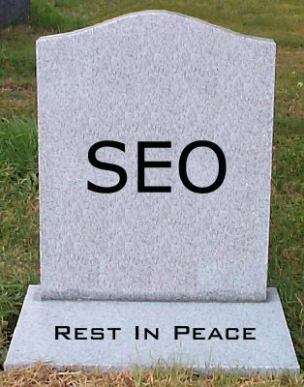If you’ve been in the small business marketing game long enough, you’re bound to come by the term “red water – blue water.”
The Red Water
 At the core of the expression is the idea that everyone wants to catch the most fish and as a result most companies end up all hunting in the same pool of water. After all, these pools are loaded with fish so it only makes sense it’s where you’d spend most your time. You might even land a few meals too. But too many companies fishing out of the same pool causes a feeding frenzy, which results in blood in the water, and that’s when the sharks (big business) come in. Now in order to get to the fish you have to cut your prices, double your ad budgets, and hire more salespeople to put more lines in the water. Even then the sharks seem to chase you off after a couple of quick nibbles. That is why they call it “red water.”
At the core of the expression is the idea that everyone wants to catch the most fish and as a result most companies end up all hunting in the same pool of water. After all, these pools are loaded with fish so it only makes sense it’s where you’d spend most your time. You might even land a few meals too. But too many companies fishing out of the same pool causes a feeding frenzy, which results in blood in the water, and that’s when the sharks (big business) come in. Now in order to get to the fish you have to cut your prices, double your ad budgets, and hire more salespeople to put more lines in the water. Even then the sharks seem to chase you off after a couple of quick nibbles. That is why they call it “red water.”
The Blue Water
 Swimming with the sharks isn’t a great way to win in business. Small business owners have long understood that in order to succeed they need to distinguish themselves from their competition and offer a unique value their major counterparts can’t. They have to swim where the majority of their competition can’t. And in return these businesses don’t have to work as hard to earn their meal. This is your “blue water.”
Swimming with the sharks isn’t a great way to win in business. Small business owners have long understood that in order to succeed they need to distinguish themselves from their competition and offer a unique value their major counterparts can’t. They have to swim where the majority of their competition can’t. And in return these businesses don’t have to work as hard to earn their meal. This is your “blue water.”
What does this have to do with Search Marketing?
Simple – long tail keywords. Search marketers should look at long tail keywords as their map to blue water.
In case you need refreshing, long tail keywords are highly targeted keyword phrases used in search engine queries. An example of a long tail keyword is “Small Business Online Marketing” instead of the short tail (and highly competitive) alternate of “Online Marketing”.
Obviously there are a lot more searches each month for short tail keywords but the increase in searches is just about directly proportionate to the level of competition in regards to ranking for those terms. It’s the age old adage of is it better to have a very small piece of a big pie, or the biggest piece of a small pie? For most my customers, the answer is usually the latter.
Long tail keyword targeting isn’t a new concept. SEOs (both good and bad) have been building campaigns around long tail keywords since the beginning SEO time. But the success rate of these campaigns hasn’t been consistent over the years, which leaves many small business owners perplexed. After numerous failed attempts at long tail keywords they’re ready to give up.
“Hey Jim, we haven’t seen a fish out here in days…
shouldn’t we go back to where all the other boats are?”
No. The problem isn’t with the concept… the problem is that your SEO has driven the boat all the way to what I’m going to call Black Water.
Red, Blue… and now Black?
As I mentioned before SEOs love long tail keywords. A big part of the reason SEOs love long tail keywords is that they are easy to rank for. In fact, the longer and more obscure the keyword phrase the easier it is to achieve page one rankings in a short amount of time. Traditionally this is how SEOs measure their success… “Mr. Client, we got you to page one, position three – our job here is done.”
Unfortunately, rankings do not equal customers. Many times they don’t even equal prospects because the SEO has gone so far outside the box, they’re no longer targeting keywords that your target audience is searching for. This is the black water. Sure, you’re the only boat anywhere to be seen, and yes there’s a lot of ocean beneath you. Only no one is really sure if there are any fish in the black water or if they’re inclined to bite. Fishing in black water is the best way to burn through your marketing budget with nothing to show for it. Letting your SEO run away with keywords that don’t relate to your business, or don’t see any search volume will only end in a long, painful swim back to shore.
So how do we find blue water?
Research is the most important element of any search marketing strategy. It’s also the point where customers should be the most involved. Ideally, your SEO should seek to understand your business, your market, and your competitive advantages before they start to craft a keyword strategy for your SEO campaign. Then they should discuss the strategy with you – in detail. Don’t be afraid to ask your SEO for firm numbers relating to the keywords they are targeting. How many people are searching this phrase per month on Google globally? How many locally? How tough is the competition? How long do you expect it will take us to rank on page 1, 2, 3 for this phrase? What are the alternatives?
Customers should never be afraid to put their SEO on the spot. After all, SEO is as much a part of your overall marketing strategy as are the billboards or radio spots you consider. And while I believe every SEO has a right to protect their trade secrets – never let your SEO hide behind “proprietary information” as an excuse for not having an answer. At the very least your SEO should be able to explain how they came to the figures they did, and why.
Just like you want your fishing guide to be knowledgeable and experienced, you want your search marketing company to have the right combination of real world credentials and proven results.
Have you found your blue water? I’d love to hear your experiences…







 At the core of the expression is the idea that everyone wants to catch the most fish and as a result most companies end up all hunting in the same pool of water. After all, these pools are loaded with fish so it only makes sense it’s where you’d spend most your time. You might even land a few meals too. But too many companies fishing out of the same pool causes a feeding frenzy, which results in blood in the water, and that’s when the sharks (big business) come in. Now in order to get to the fish you have to cut your prices, double your ad budgets, and hire more salespeople to put more lines in the water. Even then the sharks seem to chase you off after a couple of quick nibbles. That is why they call it “red water.”
At the core of the expression is the idea that everyone wants to catch the most fish and as a result most companies end up all hunting in the same pool of water. After all, these pools are loaded with fish so it only makes sense it’s where you’d spend most your time. You might even land a few meals too. But too many companies fishing out of the same pool causes a feeding frenzy, which results in blood in the water, and that’s when the sharks (big business) come in. Now in order to get to the fish you have to cut your prices, double your ad budgets, and hire more salespeople to put more lines in the water. Even then the sharks seem to chase you off after a couple of quick nibbles. That is why they call it “red water.” Swimming with the sharks isn’t a great way to win in business. Small business owners have long understood that in order to succeed they need to distinguish themselves from their competition and offer a unique value their major counterparts can’t. They have to swim where the majority of their competition can’t. And in return these businesses don’t have to work as hard to earn their meal. This is your “blue water.”
Swimming with the sharks isn’t a great way to win in business. Small business owners have long understood that in order to succeed they need to distinguish themselves from their competition and offer a unique value their major counterparts can’t. They have to swim where the majority of their competition can’t. And in return these businesses don’t have to work as hard to earn their meal. This is your “blue water.”
